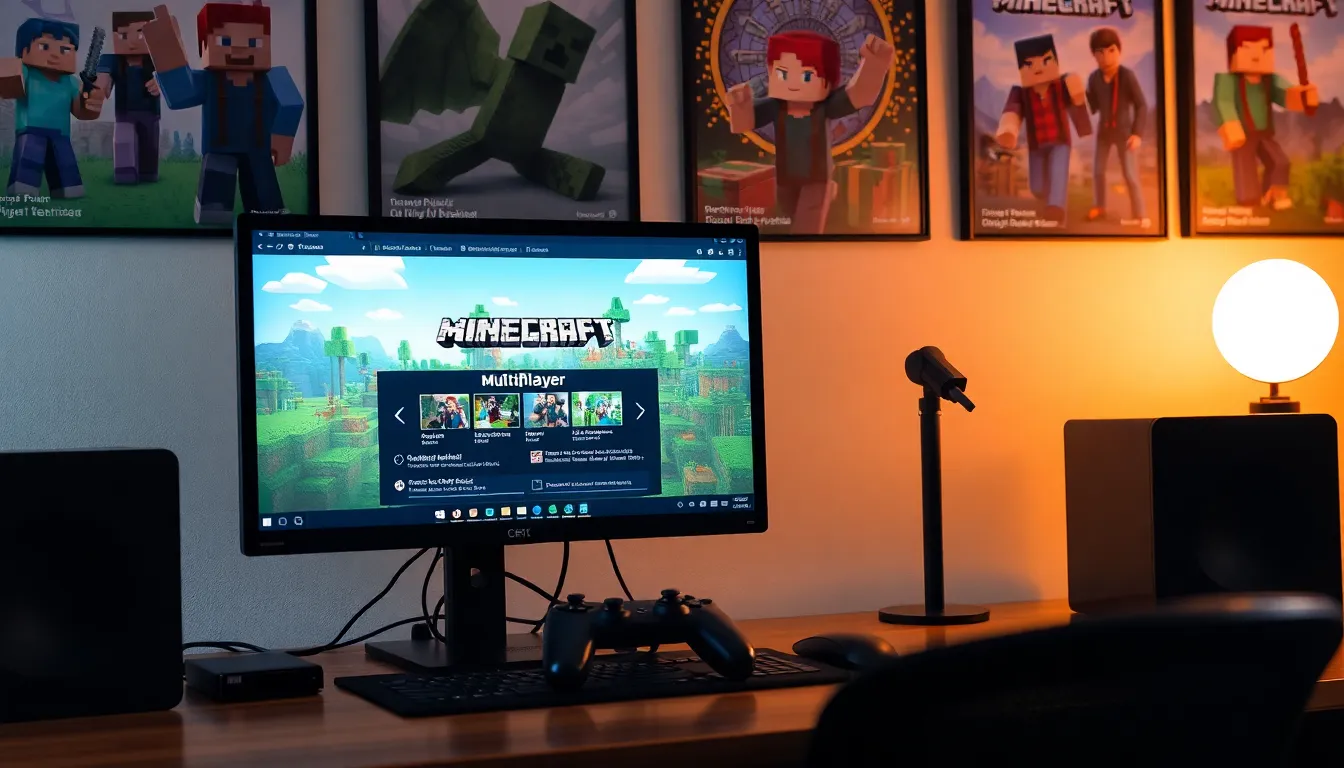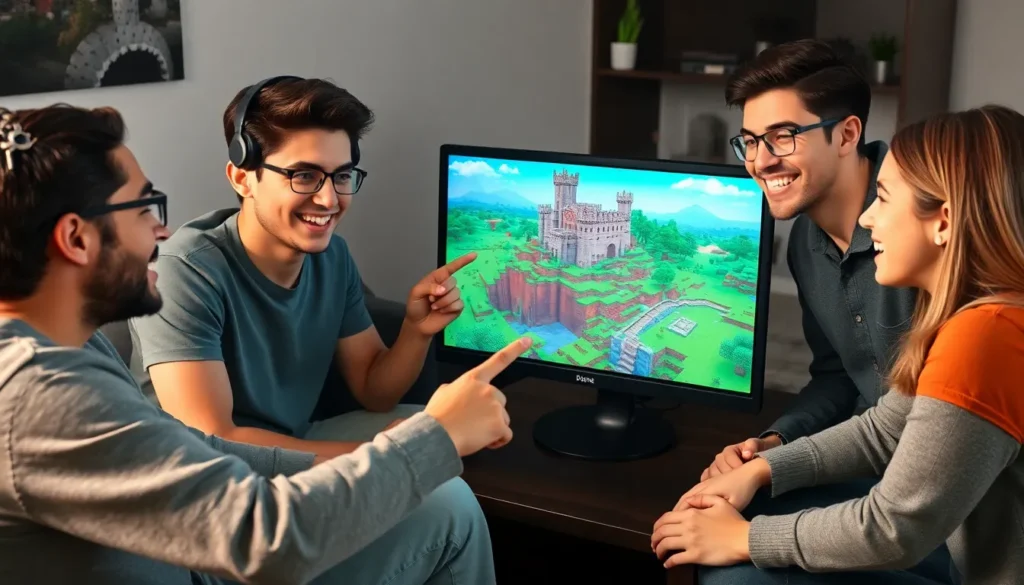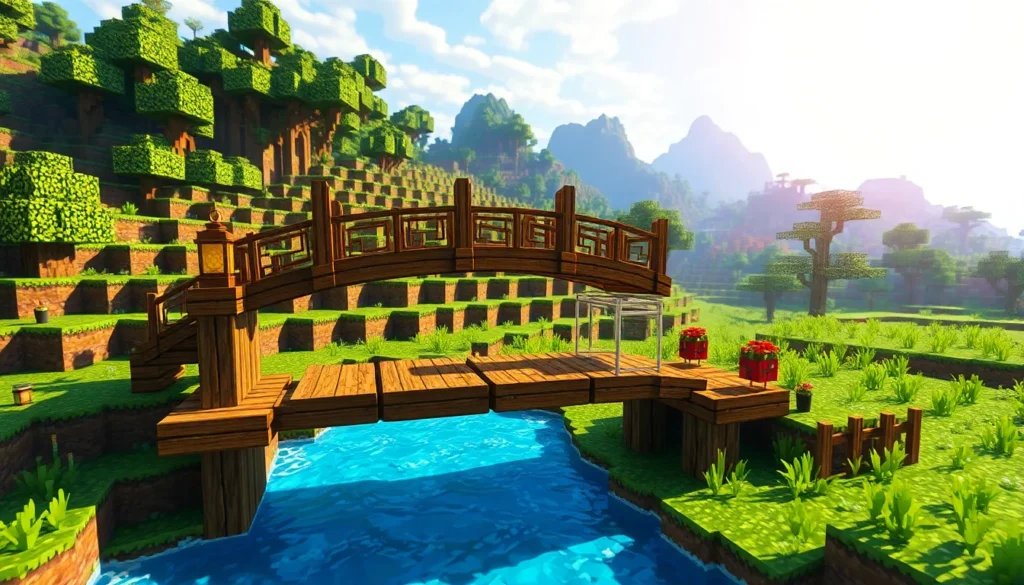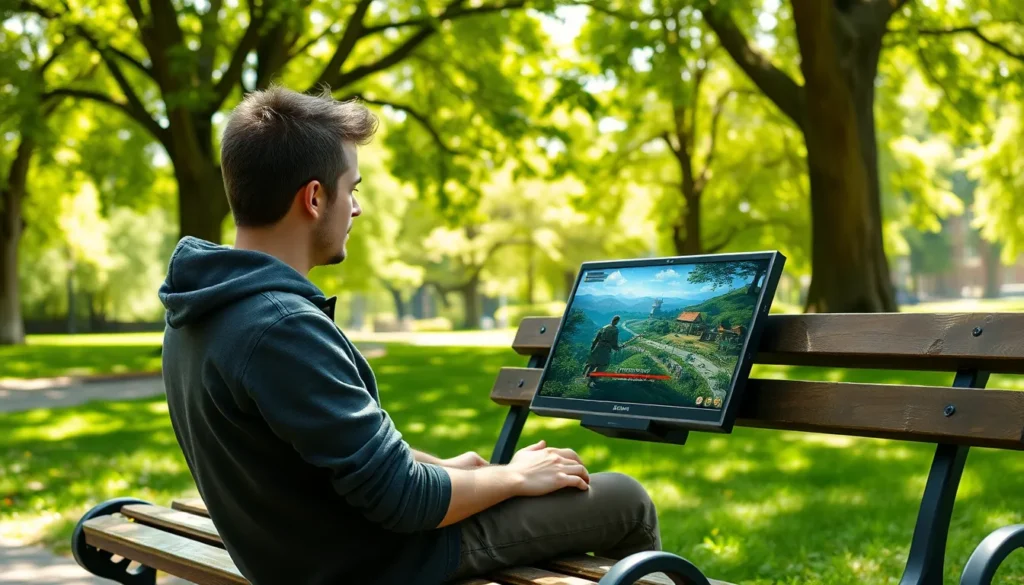In the pixelated world of Minecraft, building epic structures and exploring vast landscapes is even better with friends. But what’s the point of crafting a castle if you can’t show it off to your buddies? Enabling multiplayer is the key to unlocking a whole new level of fun. Imagine teaming up to fend off creepers or racing to see who can build the tallest tower—it’s a recipe for laughter and chaos!
Understanding Minecraft Multiplayer
Minecraft multiplayer creates opportunities for players to connect and share experiences. This mode enhances collaboration and fun within the game.
Types of Multiplayer Modes
Minecraft offers several multiplayer modes, including online servers, local networks, and Realms. Online servers accommodate numerous players in diverse worlds, fostering large communities. Local networks enable players on the same network to join each other swiftly. Realms provide a subscription-based service, allowing players to create private worlds for friends while maintaining control over who can join. Each mode caters to varying preferences, ensuring everyone finds an enjoyable gaming experience.
Benefits of Playing Multiplayer
Playing in multiplayer enhances creativity and teamwork among players. Group projects allow individuals to build larger, more intricate structures than they could alone. Engaging in cooperative challenges fosters problem-solving skills as players formulate strategies together. Social interactions promote friendships, making gameplay even more enjoyable. Competing in mini-games or building contests adds an exciting twist that keeps the experience fresh. Overall, multiplayer significantly enriches the Minecraft experience.
Preparing for Multiplayer

Preparing for multiplayer in Minecraft involves ensuring the system meets specific requirements and having the right accounts and subscriptions. Players should verify these aspects to enjoy a seamless gaming experience.
System Requirements
System requirements for Minecraft multiplayer depend on the version. The official minimum requirements for the Java Edition include 4 GB of RAM, Intel HD Graphics 4000, and a stable internet connection. For the Bedrock Edition on Windows, a minimum of 4 GB of RAM and DirectX 11 compatible graphics are necessary. Players using older systems may experience performance issues, so it’s advisable to check for updates on hardware. Understanding these requirements aids in troubleshooting connection problems and enhancing gameplay quality.
Necessary Accounts and Subscriptions
Necessary accounts and subscriptions vary based on the platform. Players using Minecraft Java Edition require a Mojang account to access multiplayer features. For players opting for Bedrock Edition on platforms like consoles, an Xbox Live account is essential. Subscriptions may also apply; Xbox Live Gold or Nintendo Switch Online is necessary for online multiplayer on those platforms. Players should manage their accounts to ensure active subscriptions for seamless access to online features and servers.
Enabling Multiplayer on Minecraft
Enabling multiplayer in Minecraft allows players to connect and collaborate, enhancing the overall gaming experience. Each edition has specific steps to facilitate multiplayer access.
For Java Edition
Players using Java Edition must adjust their game settings. First, navigate to the “Multiplayer” menu option on the main screen. Then, select “Add Server” to enter the server’s IP address and name. After saving the changes, select the server to join. If hosting a game, open the world to LAN from the pause menu and allow others to connect by providing the displayed port number. Ensure that friends have the same version of Minecraft for seamless gameplay.
For Bedrock Edition
Bedrock Edition players can enable multiplayer through a few simple steps. They must access the game settings before starting a new or existing world. Enabling “Multiplayer” ensures that others can join the game locally or online. For online access, players require an Xbox Live account. Once set up, friends can be invited through the in-game menu, simplifying the joining process. It’s crucial to check that friends are using the same version and platform for optimal connectivity.
Troubleshooting Common Issues
Multiplayer gameplay in Minecraft can sometimes present challenges. Below are common problems and solutions to enhance the experience.
Connection Problems
Connection issues often stem from poor internet stability. Players must check their Wi-Fi signal strength before starting. Verifying that the game version matches the host’s is crucial. It’s also important to ensure that the firewall settings allow Minecraft to connect. Sometimes, restarting the router can resolve connectivity issues. Checking for software updates can also help improve performance. If problems persist, players should consider testing another network to isolate the issue.
Server Issues
Server-related problems frequently disrupt gameplay. Players should first confirm the server address entered is accurate. An outdated server may also prevent successful connections. When a server is down, a message usually appears, indicating its offline status. Players can also check online forums for updates. Adjusting the server settings might be necessary if players are hosting their own. If server lag is a concern, reducing the number of active players may enhance performance.
Enabling multiplayer in Minecraft opens up a world of creativity and collaboration. Players can build together tackle challenges and create lasting memories with friends. Whether through online servers or local networks the options cater to every player’s preference.
By following the steps outlined and ensuring the right system requirements are met players can dive into an enriched gaming experience. Troubleshooting common issues further enhances the enjoyment allowing seamless connection and interaction. With multiplayer gameplay the possibilities are endless and the fun is just beginning.








